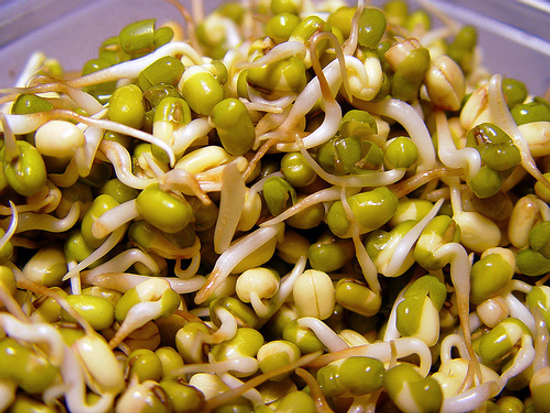Below is an article from one of my favorite and most read blogs..."Food Renegade."
I highly recommend adding their posts to your RSS feed for daily reading.
What are your adrenals, anyway? These tiny, triangular shaped glands sit on top of your kidneys and are responsible for creating and releasing hormones for helping you cope with stress (most notably cortisol and adrenaline).
When you’re stressed, your adrenals release adrenaline (also known as epinephrine). The adrenaline increases your heart rate, contracts blood vessels, and dilates air passage ways to quicken your fight-or-flight response. You experience this as feeling suddenly super-charged, ready for feats of muscular strength and/or quick thinking. Your body quickly burns through your immediately available energy stores, lowering your blood sugar. Your adrenals release cortisol in combination with adrenaline to increase your blood sugar and increase the liver’s stores of glycogen in order to help your body return to homeostasis.
When Your Adrenals Malfunction
If you experience prolonged, frequent, or intense emotional or physical stress and don’t have a diet which supports optimal adrenal functioning, you may experience
adrenal fatigue when over-stimulation of the adrenal glands leave them unable to meet your body’s needs. Some other names for the syndrome include non-Addison’s hypoadrenia, sub-clinical hypoadrenia, hypoadrenalism, and neurasthenia.
Symptoms can include:

- excessive fatigue and exhaustion
- non-refreshing sleep (you get sufficient hours of sleep, but wake fatigued)
- overwhelmed by or unable to cope with stressors
- feeling rundown or overwhelmed
- craving salty and sweet foods
- you feel most energetic in the evening
- a feeling of not being restored after a full night’s sleep or having sleep disturbances
- low stamina, slow to recover from exercise
- slow to recover from injury, illness or stress
- difficulty concentrating, brain fog
- poor digestion
- low immune function
- food or environmental allergies
- premenstrual syndrome or difficulties that develop during menopause
- consistent low blood pressure
- extreme sensitivity to cold
How To Keep Your Adrenals Healthy
Reduce Stress.
This means saying no to the hectic pace of modern American life and practicing stress-relieving exercises like yoga, prayer, or meditation.
Get More Sleep.
Too little sleep causes your adrenals to over-produce cortisol and adrenaline just to maintain normal bodily functions. By resting whenever you’re tired, your body will recharge energy levels naturally rather than relying on your adrenals to keep you going.
Avoid Refined Sugars & Grains.
When you eat refined sugars and grains, your blood sugar levels rise quickly. This prompts your pancreas to release insulin to sharply lower your blood sugar levels. After your blood sugar drops, your adrenals are forced to release cortisol to increase your blood sugar levels back to homeostasis. By keeping your blood sugar levels at more natural, even levels, you can save your adrenals a significant amount of work and help them perform optimally.
Eat More Cholesterol.
Your body uses cholesterol to build hormones like adrenaline and cortisol. Without adequate amounts of cholesterol in your diet, you’ll experience the constant fatigue common to those who can’t produce adequate levels of cortisol or adrenaline.
Eat More Saturated Fat.
A high-fat diet will ensure that your blood sugar levels stay even, keep you feeling satiated, and improve your moods. All these things will allow your adrenals to function normally, rather than constantly requiring them to put out intense bursts of hormones to correct for your erratic blood sugar levels and moods. Remember to stick to the healthy fats mentioned in
this post, and you’ll do fine.
Avoid Caffeine.
The stimulants in caffeine create artificial stress on your body, prompting your adrenals to release cortisol and adrenaline to help cope. Why give your adrenals the extra work?
Eat More Salt.
A diet unnaturally low in sodium or too high in potassium can stress the adrenals. That’s because one of the hormones your adrenals secrete, aldosterone, regulates the amount of sodium and potassium in the body.
Supplement with Adrenal Glandulars.
Desiccated adrenal gland from pigs and cattle can be helpful to some people in supporting adrenal function, and replacing some missing adrenal hormones. Be sure to get a reputable brand from a reputable supplier, to ensure quality, potency and safety.[
Try Drenamin from Standard Process or a combination of Rehmannia and Ashwaganda from MediHerb]
Check out the other posts in the
Understanding The Keys To Health series!

Understanding your Adrenals: How to cope with stress











 Broccoli sprouts have been found to significantly inhibit bladder cancer development and show promise for bladder cancer prevention and treatment.
Broccoli sprouts have been found to significantly inhibit bladder cancer development and show promise for bladder cancer prevention and treatment.








